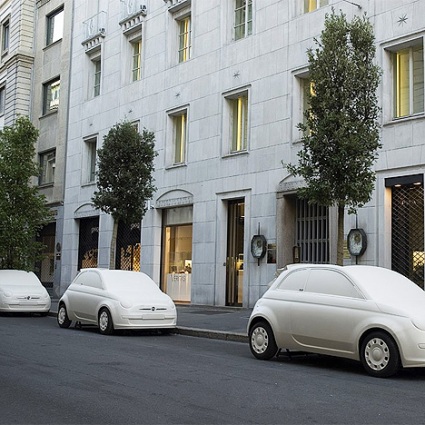A Taiwanese research group has developed stereo speakers in paper, which will lead to low-cost speakers perfect for thin devices such as LCD TVs or even talking movie posters to be used as advertisements.


Engineers at Taiwan’s Industrial Technology Research Institute (ITRI) have already produced rolls of paper stereo speakers and say they will be used in cars starting from next year. They are also planning a splash introduction of the new technology at a big exhibition in Taipei next year in which they will unroll a three-story high banner that can blare out tunes.
“A lot of companies are interested in this product,” said Chen Ming-daw, a research director at ITRI. “We don’t have enough people to handle all the attention right now.”
They call it Flexpeaker because you can roll it up or fold it just like regular paper.
One cool way the technology will be used is on movie posters.
The goal for the researchers is to be able to mass produce standard poster-size speakers (A2, or 60centimeters by 44cm) costing just US$20 each. Movie makers could then put out posters with soundtrack music or movie highlights emanating from them as people walk by.
The special paper is made by sandwiching thin electrodes that receive audio signals and a prepolarized diaphragm into the paper structure. A special Flexpeaker adapter between the MP3 player and the speaker is used to play music through the paper. But in a year, ITRI hope to develop a chip that will do away with the adapter and allow people to plug a digital music player directly into the speaker.
They’re also working on wireless technologies.
In July, the group will show off its first Bluetooth enabled paper speaker, which will eliminate the need for wires, said Liou Chang-ho, project manager of ITRI’s Flexpeaker initiative.
One limitation with Flexpeaker is that while It’s very good with sounds at frequencies between 500Hz to 20KHz, it doesn’t handle low frequency sounds well.
That problem can be offset by adding a subwoofer to any system with the paper speakers, said Liou. That’s the idea ITRI is working on for LCD TV makers. The paper speakers are so thin that they’re perfect for the current push to ultra thin LCD TVs, a maker simply has to add a subwoofer to make a quality sound system.
ITRI is already working with a company to produce the speakers in rolls, like rolls of paper.
“Once it’s being made in rolls, the cost will drop a lot,” said Liou.









